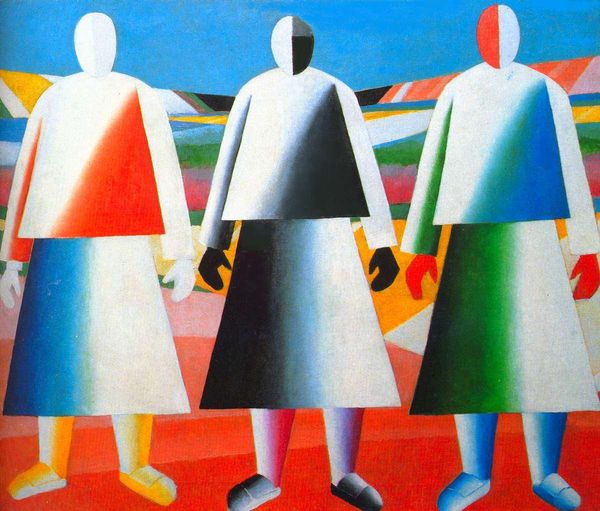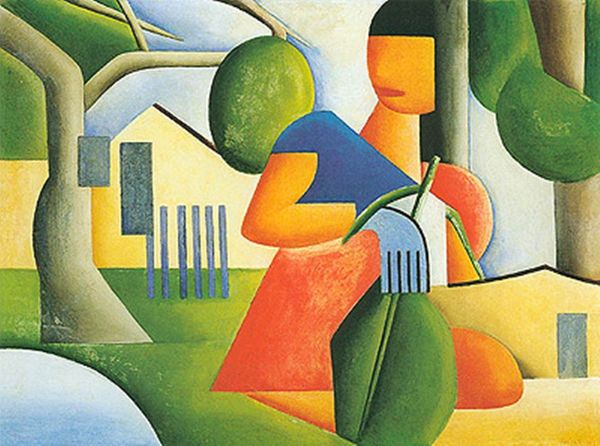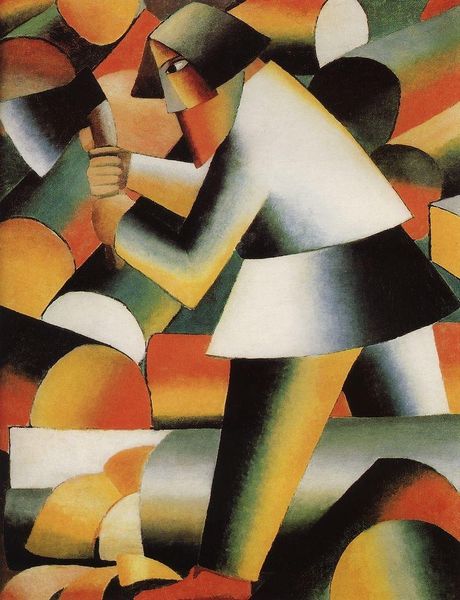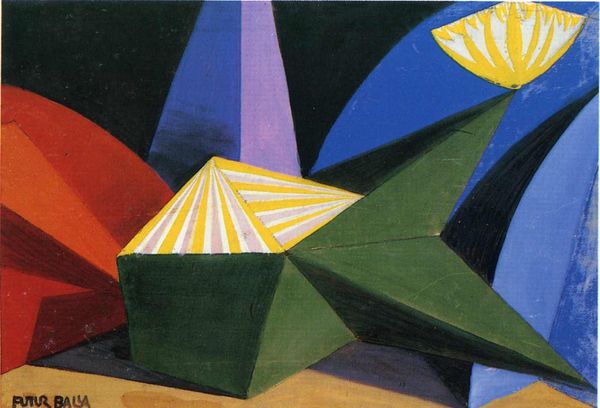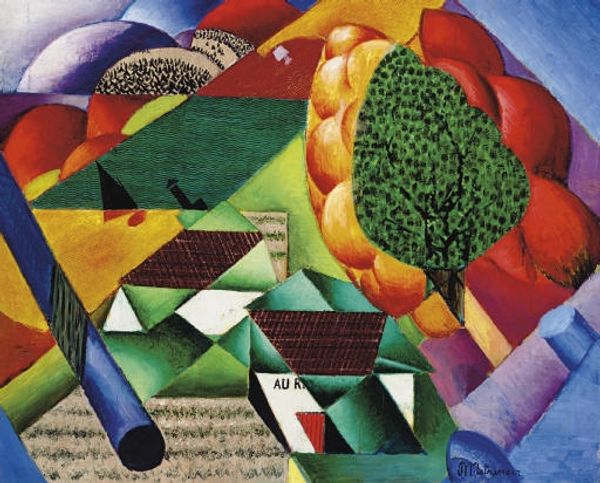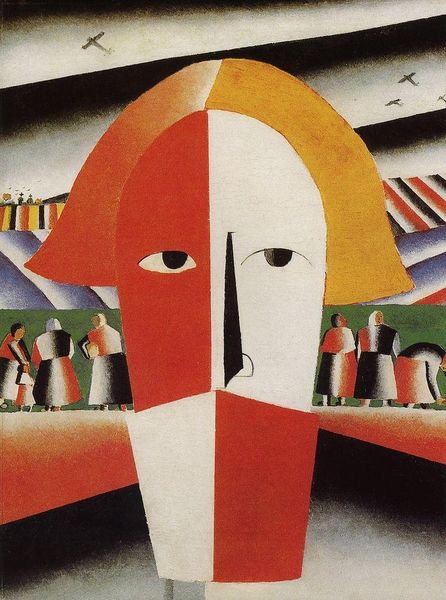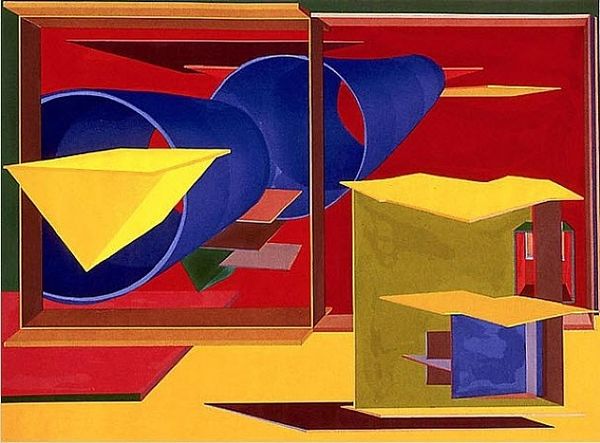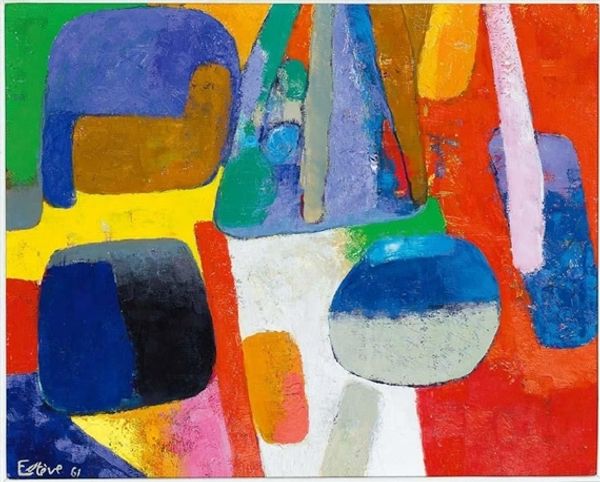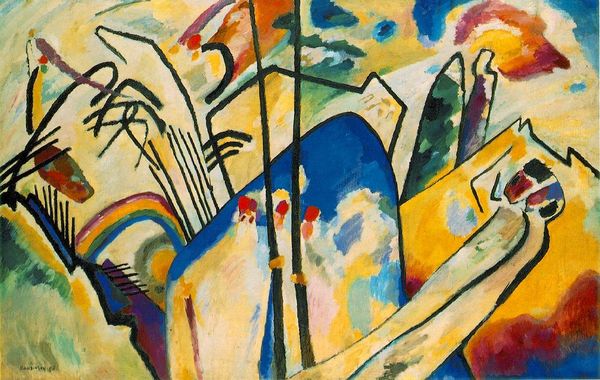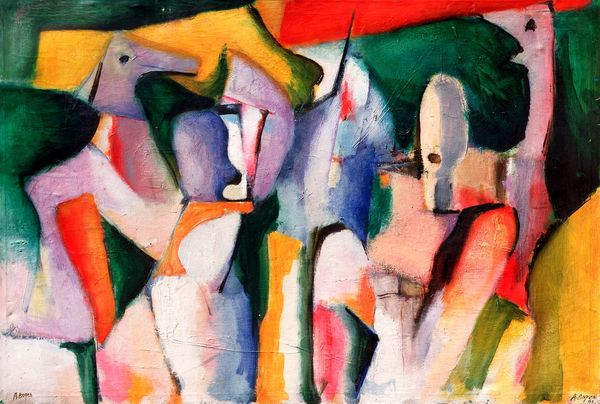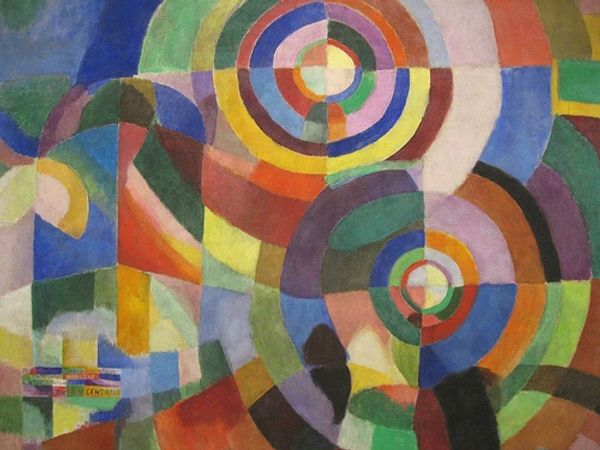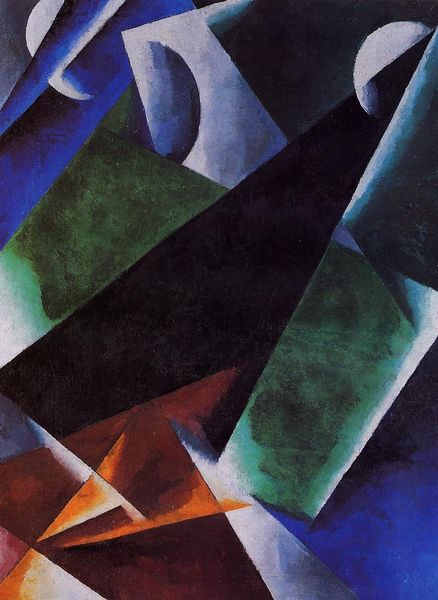
Dimensions: 53 x 70 cm
Copyright: Public domain
Curator: My first impression? Stark. There's a kind of desolate beauty, isn’t there, in Malevich's "Peasants," painted in 1930. The anonymity of those figures… Editor: It's visually unsettling. The faces are gone, or were they ever there? And the high-key palette seems to fight the somber subject. I’m intrigued by the geometrical configuration and the striking contrasts: red-yellow, white-black. Curator: Malevich painted this at a tumultuous time. Stalin's collectivization policies were devastating the peasantry. This facelessness speaks volumes about dehumanization during that period. This isn't simply abstract geometry, but a commentary on a very specific historical tragedy. Editor: I see the colors functioning more independently, less descriptively. Those rectilinear fields behind the figures—each one a different color— create a powerful structural tension against the soft transitions of light on their featureless heads and the sharp folds on the tunics. Curator: But look at how he subverts traditional landscape painting. This isn’t about capturing natural beauty; the rigid blocks represent forced land divisions and loss of identity. Those vibrant colors ironically highlight the disrupted agricultural order. The blank faces represent the silencing of dissent. The figures appear ghostlike. Editor: Perhaps, or could they also be read as universal shapes, devoid of personal traits. The emphasis falls then, doesn’t it, on form and color relationships as their own expressive vocabulary? Those subtly modulated planes and tonal shifts create remarkable volumetric sensations. Curator: Possibly, but to disregard the social and political context in which Malevich was working feels like a disservice. Remember, he was later denounced and forbidden from exhibiting his work because it was at odds with Soviet Realism. The peasant class, erased and exploited—these weren't abstract ideas but stark realities for Malevich and his contemporaries. Editor: Agreed, we can never forget the wider implications that artworks can have in certain eras, yet even taking it from its context we can notice an excellent arrangement of the composition. Thank you. Curator: My pleasure. An important reminder that a single artwork is far richer through a multifacted analysis.
Comments
No comments
Be the first to comment and join the conversation on the ultimate creative platform.
